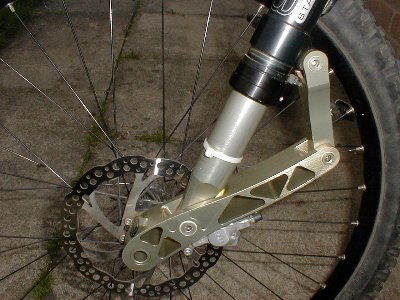



There are several AWD bike design out there. Some use a scary combinaison of chains. Others use cables to propel the front wheel. I never saw a AWD bike design a clean a those from Christini bikes. The idea is tho use a shaft to transfert power to the front wheel. The shaft runs in the frame and the fork, with a clutch located in the headset. What is quite amazing is that this design allow the use of modern suspension design and parts, like you would find on any high-end bikes. This bike use proprietary hubs, headset
 and a custom-made White Bros. fork. It should be really tough, since a motorcycle version is made! The complete setup add 2.3 lbs and an XT/XTR full suspension bike is about 3700 USD. Not bad, when you see this marvel of engineering and machining. Idea: use the shaft drive to make a completly enclosed sealed maintenance-free drivetrain for real mountain bike use. Pictures: manufacturer website: http://www.christini.com/
and a custom-made White Bros. fork. It should be really tough, since a motorcycle version is made! The complete setup add 2.3 lbs and an XT/XTR full suspension bike is about 3700 USD. Not bad, when you see this marvel of engineering and machining. Idea: use the shaft drive to make a completly enclosed sealed maintenance-free drivetrain for real mountain bike use. Pictures: manufacturer website: http://www.christini.com/










